In this article:
There are over 40,000 identifiable spider species in the world, and many are yet to be identified. The good thing is most of them are not venomous or do not bite humans. (1)
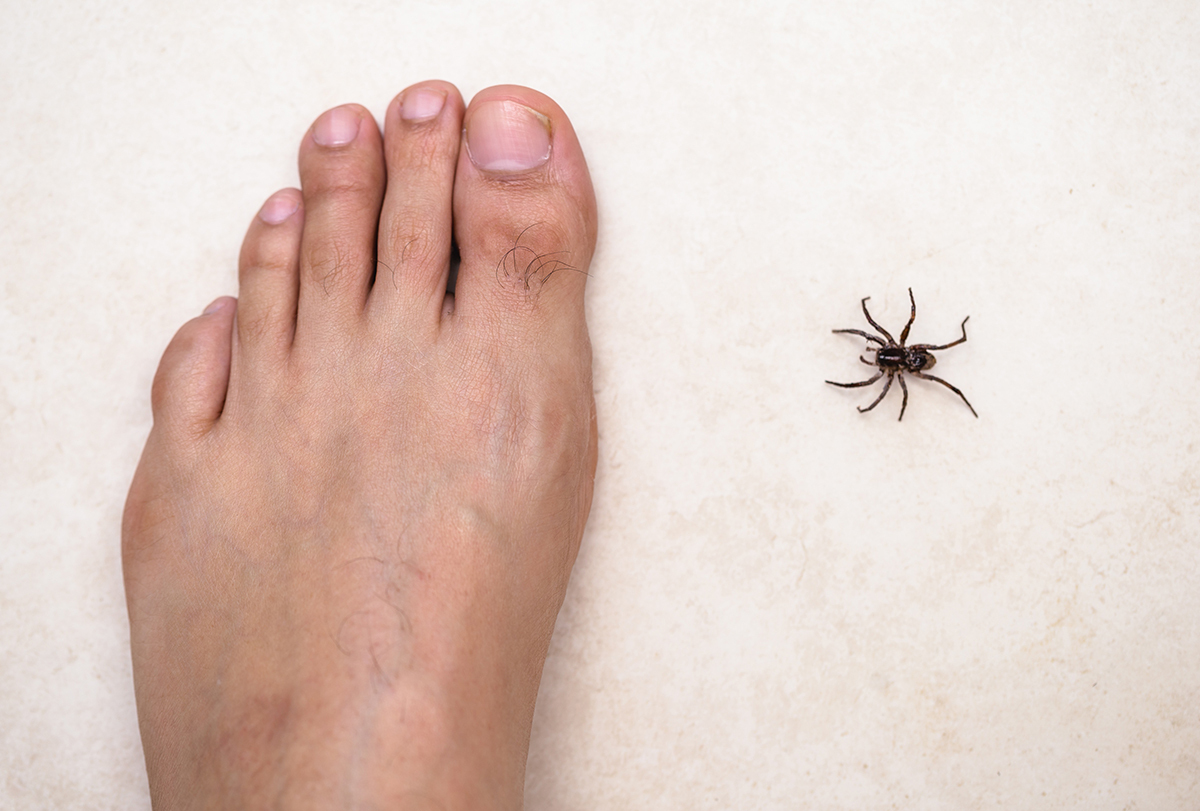
Even the ones that are venomous are not dangerous. While some spider bites can cause life-threatening outcomes and even death, some only trigger a mild inflammatory reaction.
The severity of the reaction depends on the type of spider and amount of venom released.
If you live in an area with a lot of spiders, it’s recommended to familiarize yourself with the different species found there and what to do when you get bitten by them. The medical treatment for spider bites may vary from species to species. (1)
This article will share a few natural remedies that can help heal common spider bites that are relatively harmless and do not induce a severe reaction.
Such spider bites trigger localized skin inflammation that manifests in the form of:
- Redness
- Swelling
- Pain
- Itching or rash (2)
Natural Remedies for Spider Bites
Here are some of the natural ways to relieve the inflammatory symptoms caused by spider bites:
Caution:
- Seek medical treatment if your symptoms continue to worsen for more than a day.
- These remedies are not recommended for severe spider bites caused by highly poisonous species such as tarantula, brown recluse, black widow, hobo, or a Brazilian wandering spider, which require prompt medical attention in an emergency setting.
1. Apply a cold compress
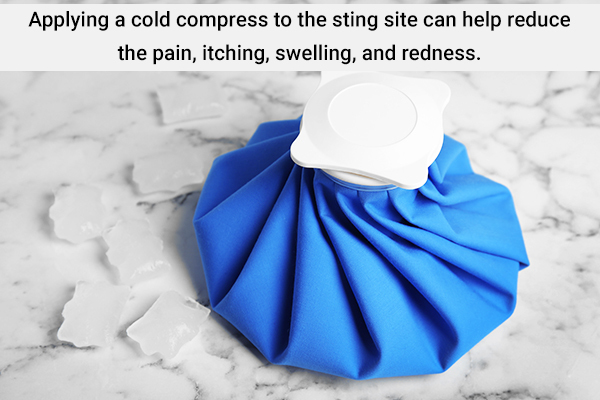
Applying a cold compress to the sting site can help reduce the pain, itching, swelling, and redness. (3)
The cold temperature shrinks the underlying blood vessels, restricting blood flow in the area and thus curbing the inflammatory response. Plus, it desensitizes the nerve endings, inducing a numbing effect. Thus, the swelling goes down and you feel less pain and itching.
However, bear in mind that these therapeutic effects only last for a short period, and so you have to use the compress multiple times throughout the day until your condition improves.
How to use:
- Wrap a couple of ice cubes in a clean washcloth. If ice is not available, you can soak the washcloth in cold water and wring out the excess liquid to use it as a cold compress.
- Place the cold compress on the affected area for no more than 15 minutes at a stretch.
- Repeat as needed, but with a short gap between consecutive applications.
2. Use salt to soothe the area
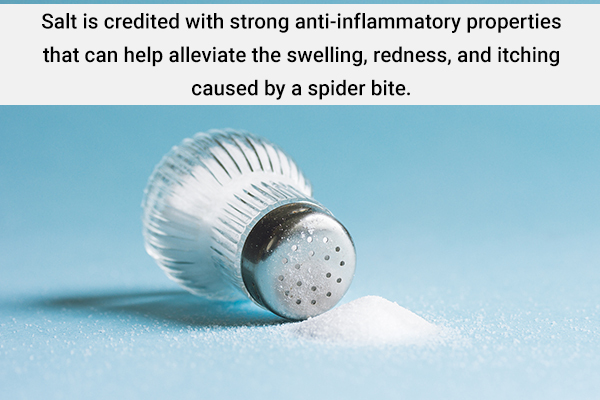
Salt is credited with strong anti-inflammatory properties that can help alleviate the swelling, redness, and itching caused by a spider bite.
It helps draw out the toxins released from the sting to curb the inflammatory reaction and facilitate proper skin healing. Plus, salt works as an antiseptic that sanitizes the wound site to keep it infection-free. (4)
How to use:
- Dampen a clean piece of cloth.
- Sprinkle some table salt on it.
- Wrap the cloth around the bite for a few hours.
3. Use activated charcoal
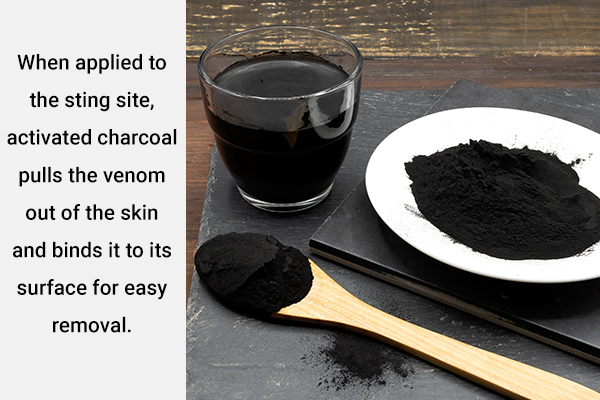
Activated charcoal is a highly porous substance with a large surface area and negative electrical charge. Due to these characteristics, it works as a powerful adsorbent that pulls positively charged molecules towards its surface like a magnet.
When applied to the sting site, activated charcoal pulls the venom out of the skin and binds it to its surface for easy removal. When taken orally, it traps the poisonous toxins released from the spider bite and removes them from your system via excretion.
However, you must use it soon after the bite occurs to prevent the poison from spreading or getting absorbed into your system and thereby causing a severe inflammatory reaction. (5)
How to use:
- Gulp down 1–2 charcoal tablets with a full glass of water on an empty stomach. Do this 2–3 times a day, but not within 2 hours of taking any other medication.
- For topical use, you can make either a charcoal poultice or a paste of charcoal powder mixed in coconut oil and apply it to the sting site.
4. Apply turmeric powder
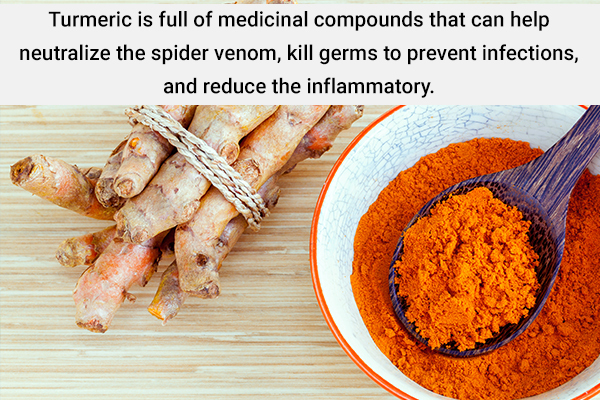
Turmeric is full of medicinal compounds that can help neutralize the spider venom, (6) kill germs to prevent infections, and reduce the inflammatory response to alleviate the redness, pain, and itching around the sting site.
How to use:
- Mix a few drops of olive oil in turmeric powder to make a thick paste.
- Apply it to the affected area.
- Let it sit for about an hour.
- Wash it off using lukewarm water.
- Do this multiple times throughout the day until the skin heals.
5. Apply aloe vera gel
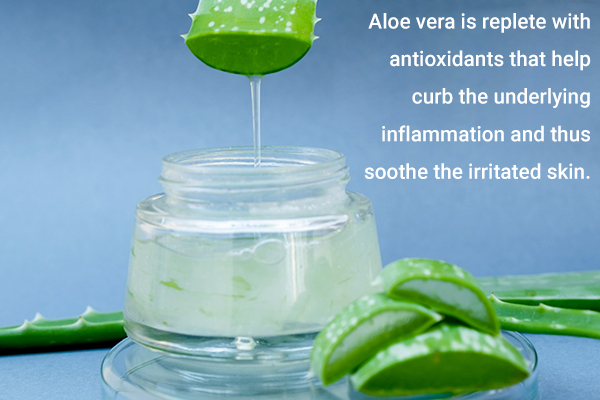
The gel extracted from the aloe vera plant is used for treating a variety of skin conditions, including spider bites. When applied to the sting site, this lubricating gel hydrates the wound, which helps strengthen the skin barrier and facilitates proper healing.
Aloe vera is replete with antioxidants that help curb the underlying inflammation and thus soothe the irritated skin. These antioxidants also help repair the damaged skin.
Not just that, aloe gel also exhibits strong antimicrobial effects that can protect the wound from infection. (7)
How to use:
- Cut open an aloe vera leaf and scoop its gel out.
- Massage the gel all over the sting site and let it dry.
- Reapply the gel multiple times a day until the bite heals.
6. Rub some potato slices on the stung area
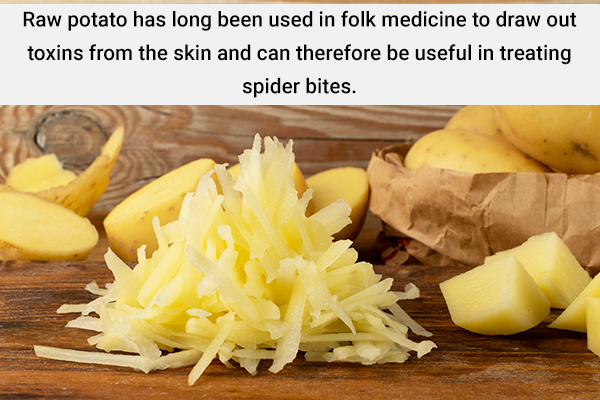
Raw potato has long been used in folk medicine to draw out toxins from the skin and can therefore be useful in treating spider bites.
When used topically, it can help reduce the underlying skin inflammation and thereby minimize the pain, itching, redness, and swelling.
How to use:
Method 1
- Thoroughly wash a raw potato and grate it.
- Apply the grated potato to the sting site.
- Wrap gauze around it and put a bandage on top to secure it in place.
- Apply a fresh dressing of potato every few hours.
Method 2
- Gently rub a slice of raw potato on the bite area for a few minutes.
- Place the slice of potato on the sting site, and secure it in place with a gauze or bandage.
- Leave it on for a couple of hours.
- Repeat several times a day.
7. Use plantain leaves
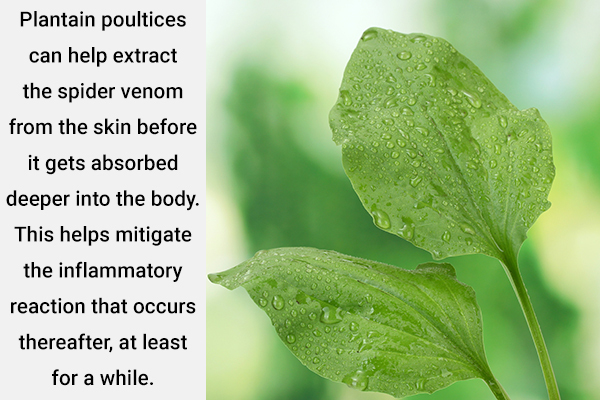
Plantain poultices can help extract the spider venom from the skin before it gets absorbed deeper into the body. This helps mitigate the inflammatory reaction that occurs thereafter, at least for a while.
Using this topical remedy immediately after getting stung can give you time to seek medical help before the symptoms set in. Moreover, regular application can help bring down the pain, swelling, itching, and redness to a considerable degree.
How to use:
- Use your finger to crush a plantain leaf.
- Apply the soft inner side over the sting site.
- Wrap a bandage around it.
- Apply a fresh plantain leaf every few hours.
8. Dab on some lavender oil
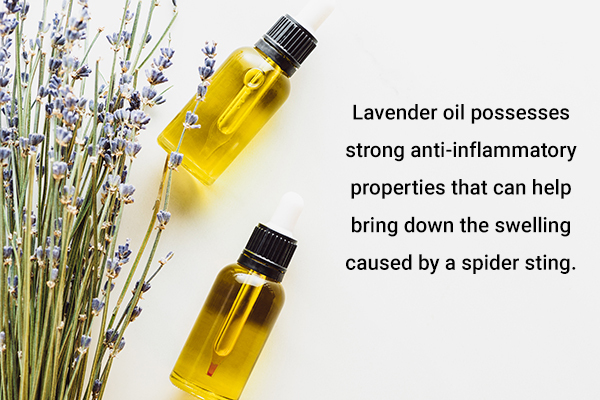
Lavender oil possesses strong anti-inflammatory properties that can help bring down the swelling caused by a spider sting. (8)
It may also help your skin heal faster when used properly and regularly.
How to use:
- Take one drop of undiluted lavender oil on your finger, and gently massage it on the sting site.
- Mix lavender oil with coconut oil, and apply this oil blend to the spider bite directly.
Preventative Tips Against Spider Bites
Protect yourself from a spider bite by following these measures:
- Spiders like to dwell in marshes and near pools of stagnant water, so avoid these high-risk sites, especially during nesting season.
- Wear protective light-colored clothing, ideally treated with permethrin.
- Employ insect screens or install bed nets to keep the spiders away while you sleep. (9)
- Switch on the closet light before reaching in to get your clothes, just to make sure there aren’t any spiders lurking inside.
- When you go camping, make sure to check your sleeping bags for any spiders before snuggling in.
- Vacuum your curtains every week to get rid of any spiders, spider eggs, or spider webs.
- Wear full-coverage clothing, socks, shoes, and gloves when moving items that have been stored in a dark place for a long time.
- It’s always a good idea to give your shoes and clothes a slight shake before wearing them to remove any spider cooped up inside.
- Place your bed a few inches away from the wall to keep the spiders away.
- Learn what dangerous spiders look like and their preferred habitats.
- Install properly fitted screens on your windows and doors to prevent entry of spiders.
- If there are any cracks in the paneling of your house, seal them with caulk to keep the spiders out.
- Use spider repellants inside your home, but make sure they are safe for indoor settings. The best choice is insecticides containing DEET 35% or picaridin 20%. (10)
- Spiders often reside under piles of rocks or lumber. If you notice any near your house, get them removed as soon as possible. If you are thinking of doing it yourself, make sure to cover your body with full clothing along with socks, shoes, and gloves. Plus, it’s recommended not to stack firewood against your house walls.
- Regularly clean spider webs in your home.
- Never swat a spider on your skin. Instead, remove it by flicking it with your finger.
- Tarantulas are highly poisonous, and so you must put on proper protective gear when cleaning their enclosures. This includes full-coverage clothing, gloves, surgical mask, and goggles. (11)
When to See a Doctor
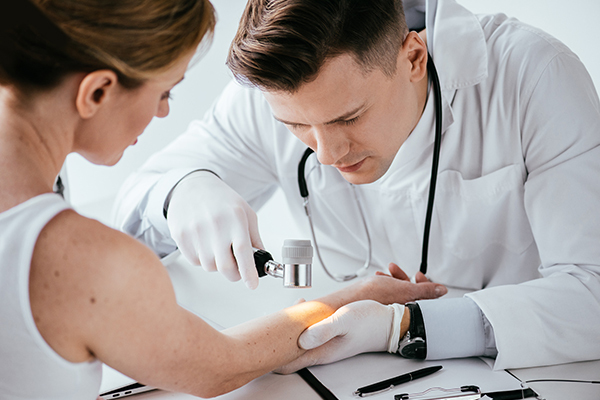
In rare cases, the sting from an otherwise harmless spider species may end up triggering an infection, a systemic allergic reaction, and even anaphylactic shock, which can prove fatal. Such severe reactions qualify as a medical emergency and require immediate treatment.
You need to look out for the following symptoms after getting bitten, and contact your doctor as soon as you notice them:
- Pain in the sting site that keeps getting more intense 24 hours after you were bitten
- Fluid discharge from the sting site and growing redness around it (signs of infection)
- Fever, chills, and body aches
- Bitten area resembling a bull’s eye or becoming an open sore
- Pain in other areas of the body, such as headache or abdominal cramping
- Rapid heart rate
- Difficulty breathing or swallowing
- Nausea and vomiting
- Chest tightness
- Swelling in your mouth or face
Final Word
The above-mentioned remedies are mainly recommended for mild spider bites that only cause localized pain and inflammation. The natural ingredients used may help draw out the venom and minimize the reaction, ward off secondary infections, and promote faster skin repair.
You can also try some of these remedies to slow down a severe or potentially dangerous reaction to buy yourself more time to get medical help.
- Was this article helpful?
- YES, THANKS!NOT REALLY


